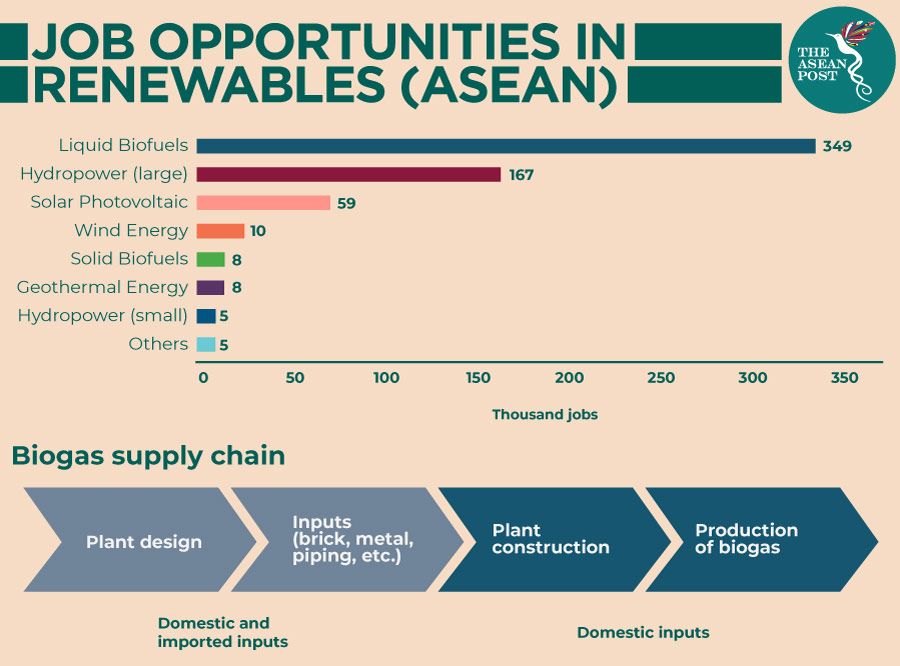The push towards renewable energy has seen biogas emerge as a viable option for Southeast Asian countries looking to diversify their energy mix. Biogas refers to the mixture of various gasses – usually methane, carbon dioxide (CO2) and hydrogen sulphide – that are produced as a result of the breakdown of organic matter like municipal solid waste, agricultural residue and organic industrial waste.
The main reason for the prevalence of biogas in the ASEAN region is down to the simple economics of supply and demand.
On the supply side, the region has an abundance of palm oil. Palm oil waste, known as palm oil mill effluent (POME) is the active ingredient that produces the biogas and is generated in large volumes during the production of crude palm oil. Southeast Asia is not short of palm oil mills. Combined, Indonesia and Malaysia have over 1,000 palm oil mills that produce almost 90 percent of global palm oil supply. This results in the generation of around 126 million tonnes of POME yearly.

The demand for biogas has grown because of the need to shift to more renewable sources of energy and to increase electricity penetration within the ASEAN region. According to the ASEAN Centre for Energy (ACE), 107 million citizens in ASEAN member states still lack access to electricity. One solution to this conundrum is the deployment of renewable off-grid electricity solutions which are standalone grids that are not connected to other power grids and are usually deployed in rural communities where people live in inaccessible, remote areas.
These off-grids can be powered by biogas via the use of a biogas digestor that utilises relatively simple, and user-friendly technology. The digester which resembles a large tank is filled with bacteria that ingests organic waste like POME and releases flammable methane gas. First, it is fed with organic waste products. The produced gas can then be used to serve a variety of energy needs but is most commonly used for cooking and lighting.
The fully digested waste then exits the biogas system and can be reused as fertiliser for crops. Besides that, the waste water produced during the “ingesting” serves a similar purpose as it is rich in nutrients as well.
Positive impact
Biogas is a useful way of ensuring that excess methane gas – a greenhouse gas (GHG) – from the production of crude palm oil is put to work, generating energy instead of being released to the air and harming the environment. Estimates by the Asia Pacific Biogas Alliance indicate that the potential of biomass to biomethane conversion in the production of renewable biogas is enough to displace 25 percent of natural gas demand.
So far, Southeast Asian countries like Thailand, Malaysia and Indonesia have been actively looking to increase the use of biogas in order to fulfil their respective bioenergy targets. Indonesia has set a bioenergy capacity target of 810 megawatts (MW) by 2025, Thailand’s goal is 5,570 MW by 2036 and Malaysia aims to achieve 1,065 MW this year.
Besides that, biogas also presents a lucrative investment opportunity for financiers looking to finance renewable energy projects. Such opportunities lie within the transition process from traditional biomass like fuelwood to more modern versions like biogas and biofuels.
In December 2017, Thailand’s Siam Commercial Bank provided financial support amounting to US$110 million for the construction of a palm complex. The project aims to become Thailand’s premier and most advanced palm oil complex which would integrate all palm oil processes. This includes the extraction of biomass energy for biogas plants.
“The project will help support palm oil growers and the production of alternative energy to promote Thailand’s sustainability,” the bank stated in a press release.




